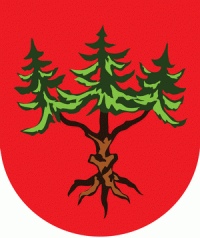The government of Siedliszcze

Mayor: Hieronim Zonik
The district mayor’s address: 22-130 Siedliszcze, Szpitalna Street 15a
Tel: (082) 569 22 02
fax: (082) 569 22 02
strona: www.siedliszcze.pl
e-mail: gmina@siedliszcze.pl
The Siedliszcze district is located in the Western part of the Chełm county in the Lublin province. It borders with districts of Puchaczów, Milejów and Trawniki in the West, with Cyców in the North, with Wierzbina and Chełm in the East and with Rejowiec Fabryczny in the South. It covers 154 km2. There are 7727 inhabitants. The population density is 50 people per 1 km2. The settlement network is created by 39 villages, of which 28 administrative units can be distinguished. The Siedliszcze district is situated in the region of Polesie Wołyńskie between two smaller geographical units called mezzo-regions, they are: Obniżenie Dorohuckie and Pagóry Chełmskie. The Western part in the area of Obniżenie Dorohuckie is characterized by a flat landscape with lots of extensive peat and poor soils as podsols typical for lowlands. The lie of the land is rarely varied by hills reaching only 182 m under the sea level. The Western part is more varied, classified to Pagóry Chełmskie- the upland. Chalk hills reaching from 180 m to 233 m under the sea level and holes filled with peat create an unique character of the area. There are following natural resources: the flint ground, sand and gravel, limestones and marlstones, coal and peat. The district involves two mining areas: Ludwinów and Puchaczów II created for coal deposits. In the past, peat was exploited for burning and farm aims. It is wise to build a heat and power station in Wola Korybutowa.
The Siedliszcze district is located in the Wieprz water basin. The right-bank tributary of the Wieprz- the Mogielnica river crosses the district area. The Mogielnica river together with its tributaries and the Wieprz-Krzna canal carry a ground water in the North and West.
The district has a typical agricultural character. Arable lands occupy the majority of the area (88%). They are separated by flat, marshy and peat valleys of watercourses as well as rare and scattered tree-covered areas and small forests. The biggest forest area is in the Northern part- in the vicinity of Dębowiec and Kulik villages. Smaller forest areas are in the Southern and Eastern part of the district (the “Popski” Forest and in the East of the Bezek village). Remains of peat areas among meadowlands are the most valuable elements of the natural environment of the district. They function as tanks of a small retention characterized by lushness of the nature constituting one of the most important elements in the ecological structure. This is the reason why these areas should be protected from any changes in the way of using, for example classifying them as ecological lands.
The following peat lands can be classified as the most interesting ones:
>more than 197 hectares, located along <Mokry Rów in the Southern and Western borders of the district in the Pawłowski’s Protected Landscape Area;
- more than 109 hectares, the place called “Bondarówka”, located in the region of Chojeniec;
- more than 59 hectares, the place called “Dębowce”, located in he region of Majdan Zahorodyński;
- more than 72 hectares, the place called “Mogielnica”;
- more than 33 hectares, the place called “Bezek”.
Many plant and animal species can be found on peat lands, for example birds which are on the Poleska’s Red List of Threatened Species: the Montagu’s Harrier, the Western Marsh-harrier, the Common Rosefinch, the Bluethroat, the Black-tailed Godwit, and the Corn Crake. The black stork occurs on meadows in the vicinity of Majdan Zahorodyński. Marshy peat is also a biotope for many amphibians and reptiles which are allied to farmers in the pest fighting. The threatened with extinction pond turtle has also its habitat here. Many plant species are under law protection on the peat lands, for instance: the yellow water lily, the white lotus, the pedicularis sceptrum-carolinum, the marsh gentian, and the large pink.
Manor parks are elements of the cultural landscape. There are eight of them in the Siedliszcze district. The most valuable ones are on the list of heritage registers. As many as five monuments were given that high status of protection:
- the manor and park complex from the 19th century in Chojeniec,
- the manor and park complex from the 19th century in Nowe Chojno,
- the manor and park complex from the 18th century in Kulik,
- the farm garden from the 16th century in Mogielnica,
- the manor and park complex from the 18th century in Siedliszcze








